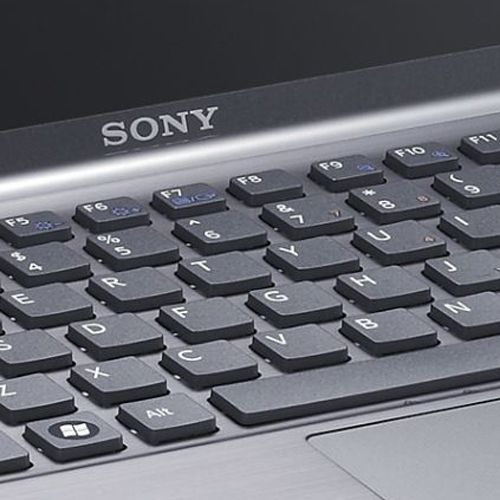Sony’s VAIO range has offered some of the most impressive ultraportable laptops over the past few years, from the tiny VAIO TZ and TT, to the larger and more powerful VAIO SZ. The 13.1-inch VAIO Z21ZN/X is the latest, and sits at the top of the VAIO range.
Our quick take
There’s no doubt the Sony VAIO Z-series is expensive; too expensive for the regular consumer, and for most those extra tenths in performance, features, mobility will be impossible to justify. The fact remains, however, that it’s also one of the best laptops we’ve ever seen.
It offers a perfect blend of performance and mobility, proving everything a laptop should be. It allows you to take it with you everywhere you go, without making compromises over your regular desktop PC. It’s everything a laptop should be.

Sony VAIO VGN-Z21ZN/X notebook - 4.5 / 5
| FOR | AGAINST |
|---|---|
|
|
It features one of the more unusual screens we’ve seen, offering an odd combination between Super and standard TFT. While it’s not a glossy panel, it’s not completely matt either, with an almost "somebody’s spilled something sticky on this" finish. That said, it does repress reflections surprisingly well, and LED backlighting helps with accurate and bright colour reproduction, while proving more power efficient.
The screen's 13.1-inch diagonal is a good size for everyday use, and is just about small enough to fit comfortably in most bags. It’s also the sharpest screen available on an ultraportable, bar the oddball VAIO P-series, with a resolution of 1600 x 900 pixels. While that proved a little uncomfortable on the P-series, it’s great on a slightly larger display. There’s enough space to work with two or more windows, and films play back with stunning clarity.
In a bid to justify the massive price tag, Sony has made the Z-series out of a host of high quality and even exotic materials, with magnesium alloy used for the chassis itself, and carbon fibre used for the skinny lid of the machine. At around 4mm thick, it was never likely to offer ThinkPad-like rigidity, but some may be surprised at the amount of flex.
It’s not necessarily a bad thing, however, as the flexible nature reduces the likelihood of the screen cracking if anything is leaning against it in your bag. That said, if you do carry it around with lots of other kit, it makes sense to leave a piece of fabric between the keys and screen, to prevent them rubbing against each other.
The inside of the Z-series is finished in brushed aluminium, running between the keys and also making up the palm rest area. The overall result isn’t as robust as a MacBook Air, for instance, but it looks and feels stunning, and is also light, at 1.5kg.
As with most VAIOs of late, the keys protrude individually through the chassis, offering better than average spacing. This makes it easy to type at speed without fear of hitting the adjacent keys, and a decent travel also makes it comfortable to use. The touchpad is large and responsive, and features a fingerprint reader between the buttons.
This machine’s party piece is the ability to offer an astounding battery life without having to resort to low-voltage components, offering the best of all worlds. As with Sony’s previous VAIO SZ range, you’ll be able to switch between an integrated Intel chipset and a dedicated Nvidia graphics card depending on needs.
If it’s performance you’re after, the Nvidia GeForce 9300M GS provides a surprising amount of shove for a laptop of this size. Granted, you’ll struggle to play Crysis in full detail, but it still offers enough power to play most games when you’re not hard at work.
When you are, a switch on the top of the chassis lets you switch from "speed" mode (dedicated GPU) to "stamina" (integrated). With the latter enabled, we managed an astonishing 8 hours away from a power point, offering true all-day use.
All this is even more surprising after a look of the spec sheet. With high-end rivals such as the Dell Adamo or Toshiba Portégé R600 opting for low-voltage processors, and the MacBook Air using a distinctly average 1.6GHz or 1.86GHz Core 2 Duo chip, Sony has stolen a march on everything this end of a full-on Quad-core gaming machines, offering a high-end Intel 2.53GHz Core 2 Duo processor and 4096MB of high speed DDR3 memory. There’s also a 128GB SSD (Solid State Drive). Office performance is astounding, proving quicker than anything we’ve seen so far in a laptop, let alone an ultraportable.
Unlike the MacBook Air, the Z offers a full complement of ports. Two USBs may still put off some users, but at least they’re now located on separate sides of the chassis - unlike the cheaper VAIO SR, which places both within millimetres of each other.
This is also one of the first VAIOs to offer HDMI-out, along with VGA, for high-definition output. ExpressCard and 1394 Firewire ports sit on the left-hand side of the chassis, along with a Gigabit Ethernet connection. You’ll also find support for both regular SD cards and Sony’s Memory Pro/Duo. The optical drive is a pop-out item, rather than slot-loading, and supports Blu-ray playback.
To recap
If you’re in the market for a high-end ultraportable, nothing else on the market can offer the Z-series’ blend of power, portability and features. It’s staggeringly expensive, but it’s also amazingly accomplished
